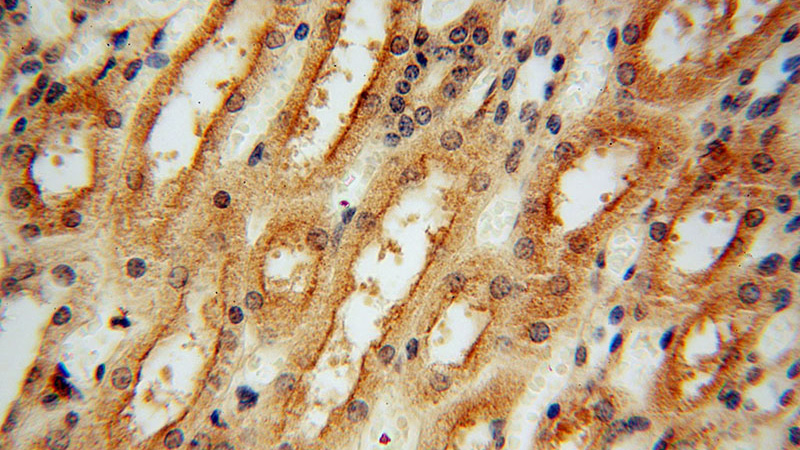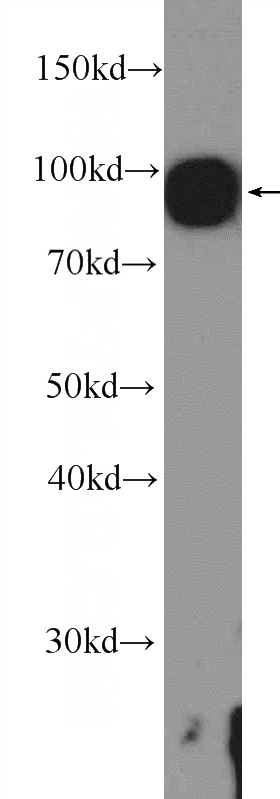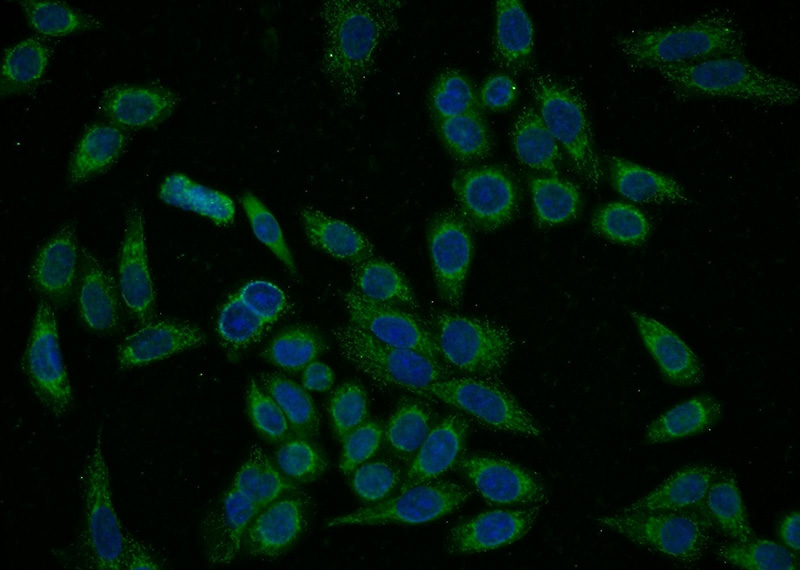-
Product Name
PYGL antibody
- Documents
-
Description
PYGL Rabbit Polyclonal antibody. Positive IF detected in HeLa cells. Positive IHC detected in human kidney tissue, human brain tissue, human heart tissue, human liver tissue, human lung tissue, human ovary tissue, human placenta tissue, human skin tissue, human spleen tissue, human testis tissue. Positive WB detected in rat liver tissue, HeLa cells, HepG2 cells, human liver tissue, human spleen tissue, mouse skin tissue, rat heart tissue. Positive IP detected in mouse liver tissue. Observed molecular weight by Western-blot: 97kd
-
Tested applications
ELISA, IHC, WB, IP, IF
-
Species reactivity
Human,Mouse,Rat; other species not tested.
-
Alternative names
GSD6 antibody; phosphorylase antibody; glycogen antibody; liver antibody; PYGL antibody
-
Isotype
Rabbit IgG
-
Preparation
This antibody was obtained by immunization of PYGL recombinant protein (Accession Number: NM_002863). Purification method: Antigen affinity purified.
-
Clonality
Polyclonal
-
Formulation
PBS with 0.02% sodium azide and 50% glycerol pH 7.3.
-
Storage instructions
Store at -20℃. DO NOT ALIQUOT
-
Applications
Recommended Dilution:
WB: 1:500-1:5000
IP: 1:500-1:5000
IHC: 1:20-1:200
IF: 1:20-1:200
-
Validations

Immunohistochemical of paraffin-embedded human kidney using Catalog No:114359(PYGL antibody) at dilution of 1:100 (under 10x lens)

Immunohistochemical of paraffin-embedded human kidney using Catalog No:114359(PYGL antibody) at dilution of 1:100 (under 40x lens)

rat liver tissue were subjected to SDS PAGE followed by western blot with Catalog No:114359(PYGL Antibody) at dilution of 1:1000

IP Result of anti-PYGL (IP:Catalog No:114359, 4ug; Detection:Catalog No:114359 1:1000) with mouse liver tissue lysate 4000ug.

Immunofluorescent analysis of HeLa cells using Catalog No:114359(PYGL Antibody) at dilution of 1:50 and Alexa Fluor 488-congugated AffiniPure Goat Anti-Rabbit IgG(H+L)
-
Background
PYGL represents phosphorylase, glycogen, liver
-
References
- Shinozaki S, Choi CS, Shimizu N. Liver-specific inducible nitric-oxide synthase expression is sufficient to cause hepatic insulin resistance and mild hyperglycemia in mice. The Journal of biological chemistry. 286(40):34959-75. 2011.
- Li Z, Lu C, Peng B. Induction of protective immunity against Chlamydia muridarum intravaginal infection with a chlamydial glycogen phosphorylase. PloS one. 7(3):e32997. 2012.
- Lai G, Wu J, Liu X, Zhao Y. 20-HETE induces hyperglycemia through the cAMP/PKA-PhK-GP pathway. Molecular endocrinology (Baltimore, Md.). 26(11):1907-16. 2012.
- Yang R, Zhang M, Gustafson AR. Loss of Protein Targeting to Glycogen sensitizes human hepatocellular carcinoma cells towards glucose deprivation mediated oxidative stress and cell death. Bioscience reports. 2015.
- Yang R, Zhang M, Gustafson AR. Loss of protein targeting to glycogen sensitizes human hepatocellular carcinoma cells towards glucose deprivation mediated oxidative stress and cell death. Bioscience reports. 35(3):. 2015.
Related Products / Services
Please note: All products are "FOR RESEARCH USE ONLY AND ARE NOT INTENDED FOR DIAGNOSTIC OR THERAPEUTIC USE"
